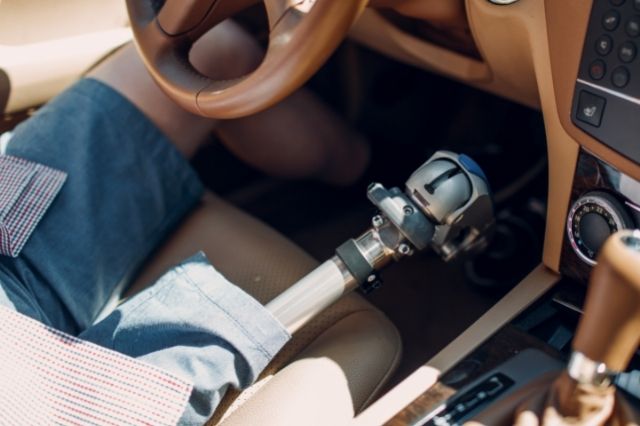Maybe it happened overseas during a battle in Afghanistan, or here at home after a battle with diabetes. Whatever the circumstances, you received an amputation, and it made you feel like your life would never be the same.
But this loss, significant as it is, doesn’t have to become a wall keeping you from all sense of normalcy. You can still do something as simple as driving to and from work. Here is everything you need to know about driving as an amputee.
Vehicle Modifications
After an amputation, finding ways to modify your home and work environment becomes part of life. And the same is true of your vehicle. Speaking to a driver rehabilitation specialist (DRS) can help you determine how to modify your vehicle to fit your needs. Here are a few suggestions a specialist might make:
Hand and Arm Amputees
For arm amputees, the greatest challenges will involve gripping the steering wheel and gear shift. In these cases, you could fit your steering wheel with an attachment so you can turn it, such as a steering knob or amputee ring. If you’ve lost more than just your hands, you may be able to go completely hands-free by modifying your car with a foot steering system.
Leg Amputees
Leg amputees must contend with getting into the car and then driving it. You can acquire a handicap-modified SUV if you’re in a wheelchair. Make sure you choose a side-loading vehicle to ensure you have access to the driver’s seat.
Once you’re behind the wheel, you’ll have to operate the foot pedals. Depending on which limb you’ve lost, you could equip your car with a left-foot gas pedal. Otherwise, you can modify a vehicle with hand controls that allow you to work both the gas and brakes.
Parking
As an amputee, you qualify to use handicapped parking spots. But to take full advantage of this, you must go through your state’s DMV. Fortunately, getting a placard is relatively simple. You need documentation of your condition from a qualified healthcare worker, such as your physical therapist or doctor. Then, you need to submit an application to the DMV.
An amputation can feel like an ending, and in many ways, it is. But taking the time to learn what you should know about driving as an amputee can help you move toward regaining your independence.



